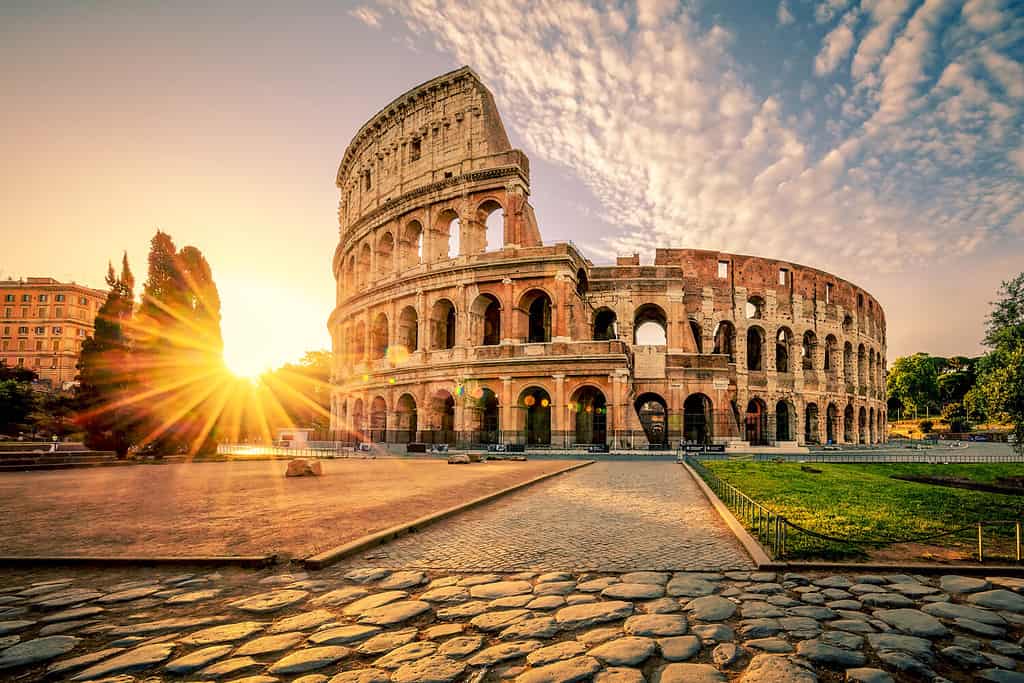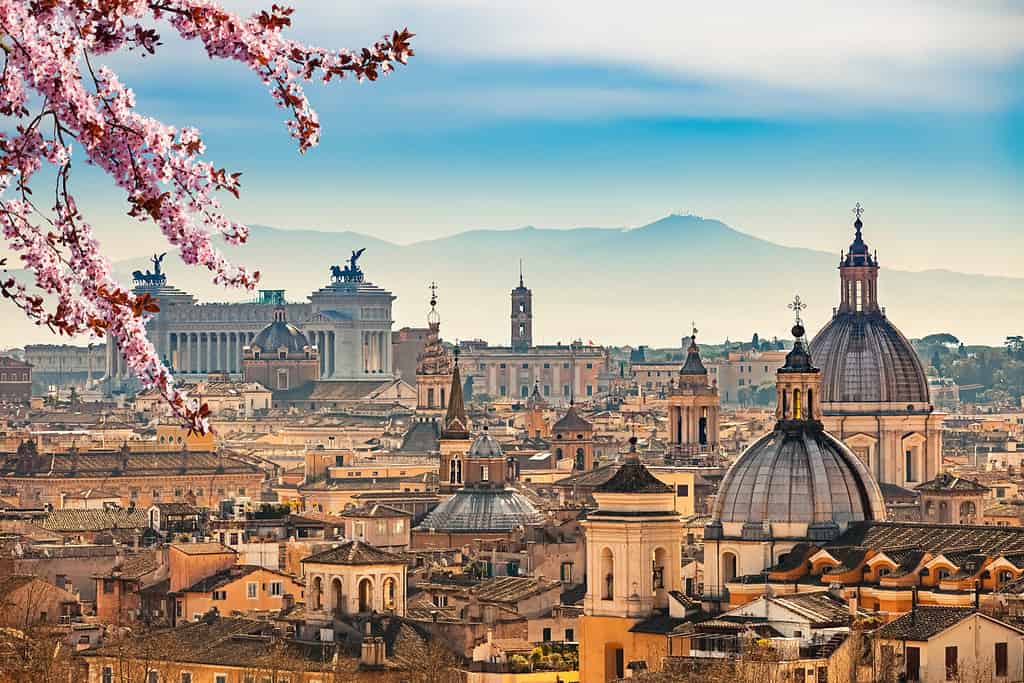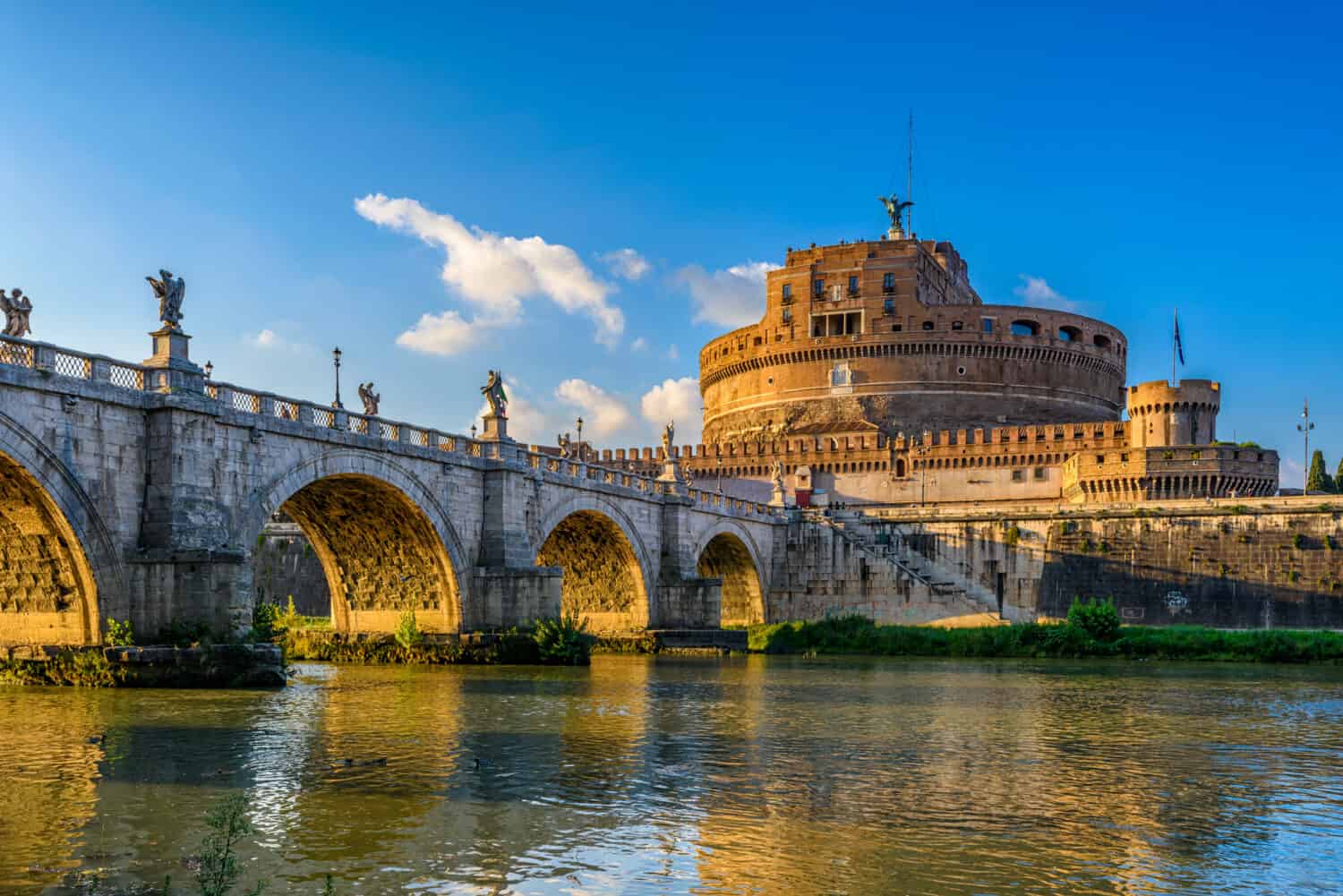“I found Rome a city of bricks and left it a city of marble,” uttered Roman Emperor Augustus. Rome is perhaps one of the most famous cities that has seen so much history. From Roman times to Mussolini’s fascist rule, Rome has withstood the test of time. Even actor Robert DeNiro acknowledged it when he stated, “Italy has changed. But Rome is Rome.” Countless people have agreed that Rome is Rome and the “city is one of all time” (as novelist Nathaniel Hawthorne wrote), in other words, Rome is an eternal city. That’s what the city is known as, but why is Rome called the Eternal City?
Let’s take a look at why Rome is called the Eternal City and explore other names the city goes by. We’ll also throw in some fun facts, too.
Where Is Rome?

Italy’s capital, Rome, has a population of 4.3 million and is the biggest city in the country.
©vololibero/iStock via Getty Images
Rome is the capital city of Italy, a country located in Southern Europe. With a population of 4.3 million, it is the largest city in the country and one of the biggest in the continent. Rome sits by the Tiber River in the central-west part of Italy, with easy access to the Mediterranean Sea. Rome is a city that is centuries old, founded by Romulus.
The Eternal City

Rome was founded on April 21, 753 by the city’s first king, Romulus.
©prochasson frederic/Shutterstock.com
The Eternal City. That is how poets, writers, painters, politicians, historians, and others have referred to Rome. As empires crumbled around the city, Rome stood the test of time. But how did that nickname originate? No one really knows the history behind the nickname, but it was uttered by Romans during the Roman Empire.
The first person to use it, as historians have acknowledged, is the Roman poet Tibellus. He called Rome the “Urbs Aeterna,” which is Latin for “Eternal City.” Quickly, that name caught on and other poets used that name to refer to Rome.
In his epic poem, Aeneid, Virgil wrote, “Imperium sine fine.” This translates as “An endless empire.” The poem stated that the god Jupiter instructed Aeneas to build and found Rome as a city that would be everlasting, or eternal. Interestingly enough, centuries later, the Roman Empire did fall, but Rome continued to exist, like an eternal flame in the wind.
Since then, others have called Rome “the Eternal City” like Roman poet Ovid, English poet Lord Byron, English writer Percy Bysshe Shelley, and American poet Henry Wadsworth Longfellow.
Other Nicknames

Rome is home to a whopping 300,000 cats.
©S.Borisov/Shutterstock.com
Rome is not only known as the Eternal City. It has many nicknames that have been coined over time. Italian painter Giotto di Bondone said that Rome was “the city of echoes, city of illusions, and the city of yearning.” Likewise, the Roman poet Marco Anneo Lucano called Rome the Caput Mundi, or capital of the world, around 61 C.E.
About a hundred years later, Roman Emperor Septimus Severus called Rome the Urbs Sacra, or the sacred city. We all know that the Roman Empire fell to barbarians in 476 C.E., but before that Rome was taken over by the Goths in 410 C.E. In his text, City of God, St. Augustine wrote that Rome could be a City of God, an Earthly City, but that Romans had to accept Christianity as the true religion.
One of the most popular nicknames Rome has is that it is sometimes called the City of Seven Hills. Rome was founded on seven hills, which is the reason for that name. The seven hills are: Aventine Hill, Caelian Hill, Capitoline Hill, Esquiline Hill, Palatine Hill, Quirinal Hill, and Vimina Hill.
Lastly, it is rumored that Rome had a secret name. Whether it’s true or not, it’s something we will never know. Historians have stated that Rome’s secret name was one that the upper echelon of society knew and never said because it would bring enemies to Rome. We will never know what secret name Rome had, but historians have assumed several including Amor, Valentia, Hirpa, and Evouia.
Conclusion

One of the most popular phrases is, “All roads lead to Rome.” This means that there are different paths or ways to reach a goal.
©Igor Link/Shutterstock.com
And there you have it, Rome is called the Eternal City because it is a city that will stand the test of time. Ancient Romans described the city as such and that feeling of eternalness passed down to poets and writers who also described it that way. Rome is truly a majestic city that has lasted for centuries. Even as empires crumbled right before the city’s eyes, Rome kept on year after year. After all, Rome is an eternal city.
Thank you for reading! Have some feedback for us? Contact the AZ Animals editorial team.








